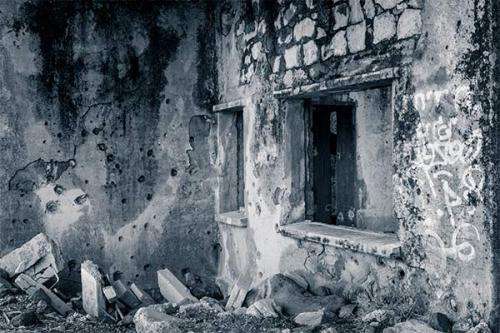Too much blood and pain?

Photographs have long been known to spark more emotional response than news reports alone – the capacity of confronting images to shock exceeds that of text. So it is not surprising that recent photographs of American journalists James Foley and Steven Sotloff, kneeling before their knife-wielding Islamic State captors, in the moments before they were beheaded prompted such outraged coverage.
But there was a more muted response when, in 2004, The Australian ran a similar photograph of American businessman Nicholas Berg. Captured in Iraq by Muslim extremists, Berg was dressed in an orange jumpsuit and kneeling before a line of men in black bearing scimitars.
Berg was also beheaded by his captors, but the images caused scarcely a fuss in Australia. And when three more captive Western businessmen were similarly murdered, none of those appalling events were reported here in graphic image and mainstream headlines. So what is the difference now?
Most likely, our response to the news of the recent beheadings was triggered by local interest: Australians have signed up as members of the Islamic State, and the local media has reported the beheading of the two journalists and the public response to the photographs, on occasion in lurid fashion.
These are photographs of men about to be beheaded – there is no blood and gore but, in their implication, they are images about as shocking as they come. So should such images be published?
Every day in news organisations there are intense and often heated debates about what photographs to use when the events depicted are violent, tragic, disturbing, shocking. There can be no rules or specific guidelines since the news value and circumstances of every event photographed are different; and the reasons such images were used yesterday may not apply today or tomorrow.
The ethics of the newsroom are shaped by group dynamics – the news organisation itself, its leaders, legacy, reputation, and policies cast gigantic shadows. Each place has its own unique style, tone, perspective, integrity, guidelines and temperament.
Twenty-first century violence and tragedy are adding to the growing archive of confronting images that raise ethics-related questions. When Berg, Foley and Sotloff were murdered, details of the killings were largely left to the public's imagination, with few media outlets running more than pictures of the men in front of their hooded killers.
If there's a line where graphic pictures go from important to inappropriate, images depicting the actual act or aftermath of beheadings are clearly on the other side of it, with the public wondering whose purposes are served by running such photographs.
When Michael Stutchbury, then editor of The Australian, made the decision to use the Nicholas Berg photograph, he said his objective was to depict what was going on in the world every day.
However, he pointed out that while photographs are important in helping to pin down what's actually happened, every time he made a decision to run or not to run such images, he questioned his purpose in making those decisions.
If the news is shocking, how much should be screened from the public? Photographs are very often infused with human interest and may have the effect of inflicting lasting pain
The media has ethical obligations to consider the sensibilities of individuals as well as the larger needs of society to be informed. The dilemma of taste is often resolved with the argument that the news values of a photograph outweigh the public's sensibilities and the feelings of family and friends of the victims.
In determining news values, the media must decide whether a photograph tells the story as no words can.
As we have seen, photographs can offer unexpected insights, serving as catalysts for emotional responses and changes in public perception. Widely recognised photographs such as Malcolm Browne's image of a Vietnamese Buddhist monk incinerating himself, Nick Ut's photograph of napalmed children, Ron Haeberle's shots of the My Lai massacre and Eddie Adams' image of the summary execution of a Viet Cong officer helped turn the tide of American opinion against the Vietnam War.
Such images are identified as part of society's collective memory of events. Photographs of the suffering, dead and dying are a means for society to recall, remember and, perhaps, understand.
As media ethics have evolved historically, so they continue to evolve in practice. As a result of this evolutionary process, on a limited range of news events 'fairly firm' policies have been established to guide editors and producers through the ethical quagmire of the news day.
But there is no consensus on questions of degree; how much blood or pain is too much? Ultimately, decisions to use confronting photographs are made on an understanding of what the public wants to know and will tolerate, and the commercial imperative to engage the public's interest.
For example, the pattern of practice or convention of coverage that has emerged with respect to pictures dealing with death suggests that while action and emotional drama are coveted, the presentation often stops short of the actual moment of death.
The problem with defining ethical professional practice is that answers are not easily found when they are most needed.
Yet, the best kind of photojournalism stays with people and becomes a civilising influence in their lives, part of a process of revelation, communication, knowledge and awareness.
Provided by University of Technology, Sydney















